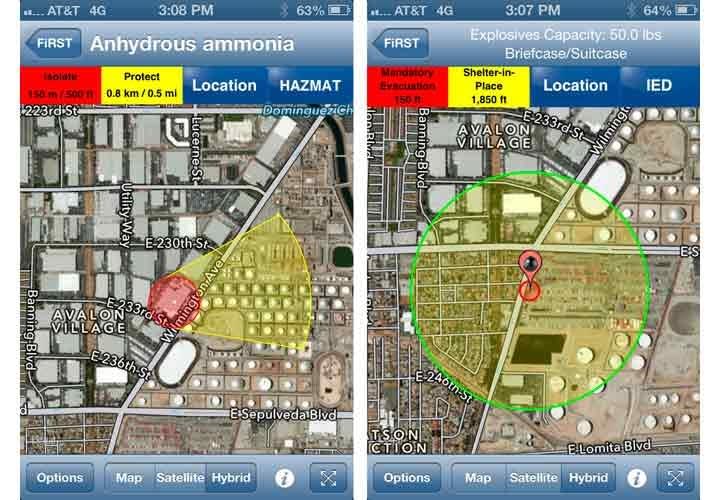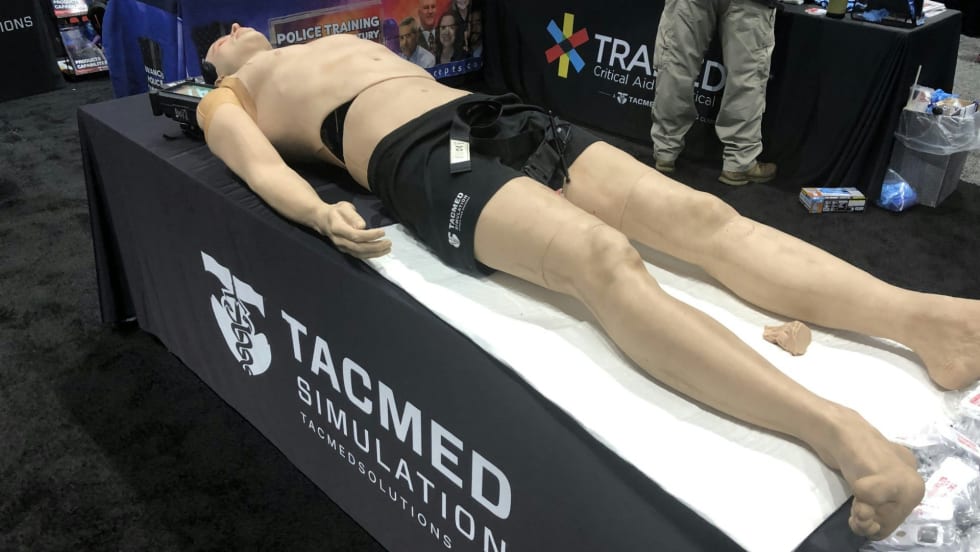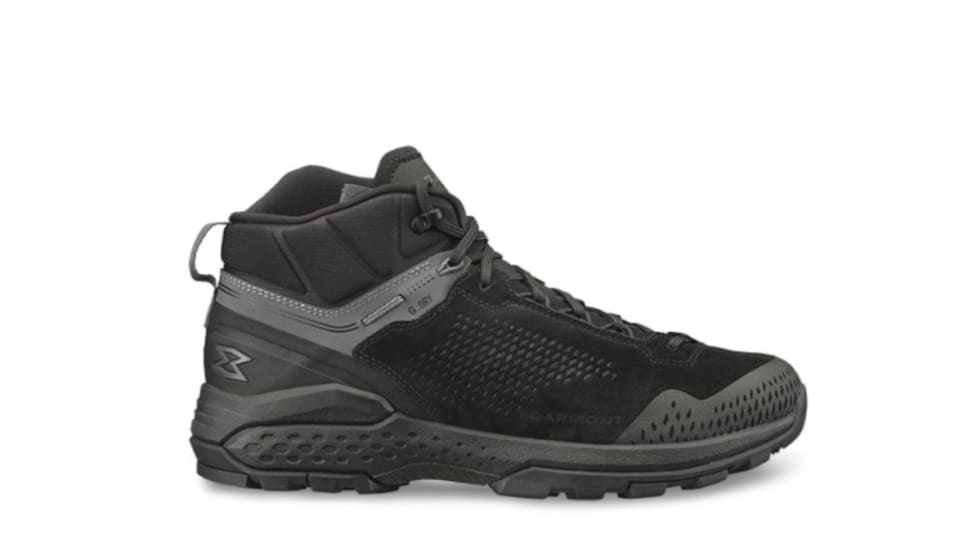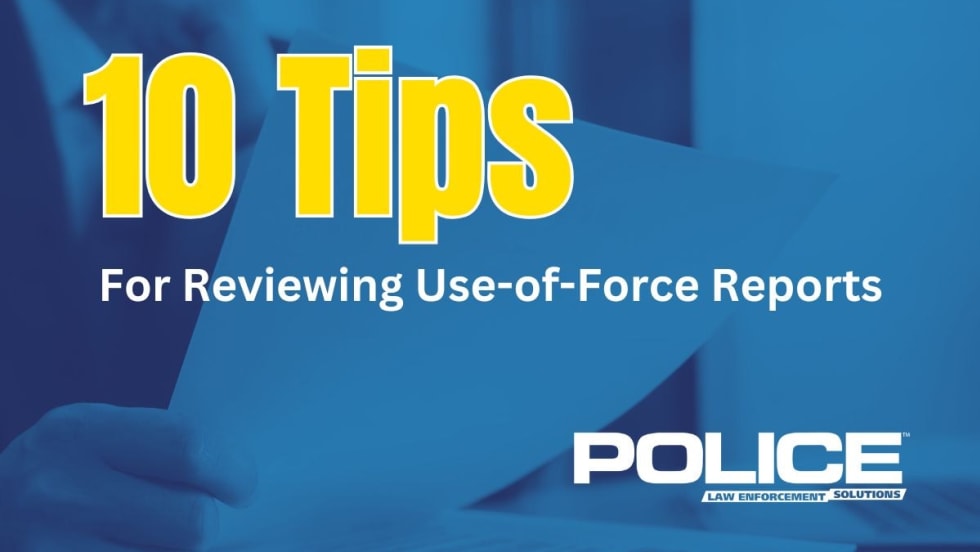The app quickly plots that data on your phone, tablet, or computer. What makes this app so useful is that is also incorporates real-time weather data when plotting potential down-wind evacuation information.
When you first launch the app, you arrive at a map screen showing your location. On this screen, place the crosshair at the incident. Next, choose either HazMat or IED. Now choose the specific incident information.
I tested IED response for a 50-pound device (right photo), and the app provided a view with location, evacuation, and shelter locations. You can easily screen-capture, and send this from nearly any device.
For the HazMat test (left photo), I plotted an anhydrous ammonia spill, and the app gave me down-wind evacuation recommendations for that time and weather. Keep in mind that as conditions change, so will your protection zones. You can enter the options area of the app to update data.
The application also allows users to view key sites and infrastructure such as schools, government facilities, and hospitals. It allows you to place roadblocks or view recommended roadblocks based on your incident. Keep in mind that if you have a phone or tablet on Wi-Fi only, you'll have to adjust location and site information accordingly.












